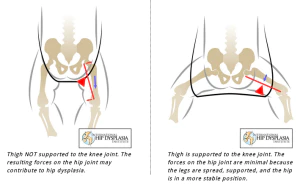About sport injuries...
We’ve all been there - we feel a bit of a niggle or pain somewhere and we either stop and rest for a while or carry on and hope that it goes away, only it doesn’t. The majority of our clients seek the advice of a Physiotherapist approximately 1 month or more after the initial injury and usually after a prolonged period of “rest” and on returning to their sport they have the same problem. Sometimes they are lucky and it does indeed go away without intervention, however it is common that by the time they decide that help is needed, compensatory movement patterns and/or bad habits have developed and these are often more difficult to eliminate than the initial injury itself.
What defines a sports injury? There is no clear categorisation system for sports injuries, however it is generally considered any injury sustained during sport or activity -in other words you don’t have to be an elite athlete to suffer a sports injury. We usually categorise them into two classes: acute and overuse injuries.
An acute injury is one that occurs suddenly to otherwise normal tissue; where the force exerted at the time of injury exceeds the strength of the tissue affected (whether it’s a direct blow for example, a collision; or indirect for example overstretching causing a muscle strain).
Conversely, an overuse injury is one that has been occurring over a period of time due to excessive, repetitive loading of the tissue causing microtrauma to the tissue. Usually symptoms present gradually and you often aren’t aware of it until a fair amount of damage has occurred.
“How long until I can return to my sport?” is the question most commonly asked in the first session. This is where our job as a Physiotherapist becomes a little trickier. We want to get you back into your sport as quickly as we can without you sustaining any further damage to yourself. What determines healing time or return to play (RTP) depends on a number of variables:
Type of injury (acute or overuse)
Tissue affected (bone, tendon, ligament, etc)
Severity of injury (grade 1,2,3 sprain etc)
Time since injury
Activity or sport that you want to get back to
These are just the physical variables that affect healing time, there is also the psychological impact an injury can have on an individual, adherence to rehabilitation, ability take a relative rest period from the sport to name but a few.
Generally speaking acute injuries take a little less time to RTP since its usually a one off instance that caused the injury, therefore is usually restricted by soft tissue healing time (approximately 6 weeks). Whereas an overuse injury is usually caused by a technique issue or muscle imbalance which needs to be addressed as part of the rehabilitation therefore will take longer than just tissue healing time.
Some tissues have better blood supply than others which can affect healing times; a mild sprain will obviously heal a little more quickly than a severe one since the amount of damage is less.
Time since injury is a crucial one. Gone are the days where resting it (ie. Putting your feet up for a few weeks) will fix the problem. Evidence shows that early (supervised) mobilisation and strengthening programmes can accelerate the rehabilitation process and get you back on your feet quicker than sitting around doing nothing. Early intervention also limits the chance of compensatory movement patterns to occur which can in fact be more difficult to eliminate than the cause of the injury itself.
Lastly the sport that you want to get back to is also important to consider. For example injuring your ankle when your sport is darts - you may only need a few days off for the initial inflammatory period and you could probably go back to playing without causing any damage pretty soon versus if you were a football player.
In summary, there is no clear cut solution for all sports injuries but we have to take into consideration a number of variables. The sooner you seek the advice of a physiotherapist the better the outcome and sooner you will be back on your feet (don’t wait for a month!). Also bear in mind that as active individuals ourselves, we want to keep you being active and will often suggest other means of exercise if you are unable to participate in your sport for a week or two.





